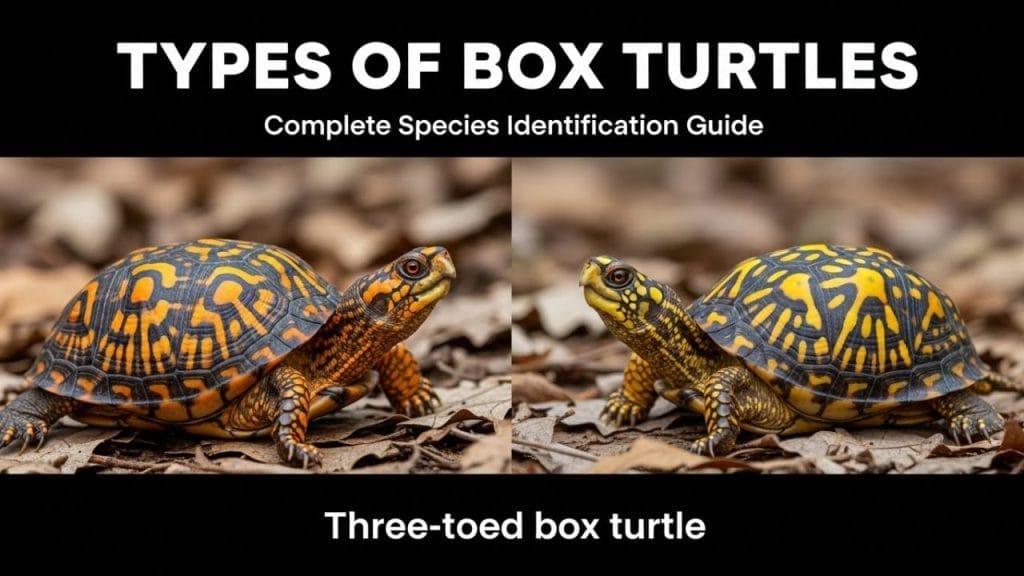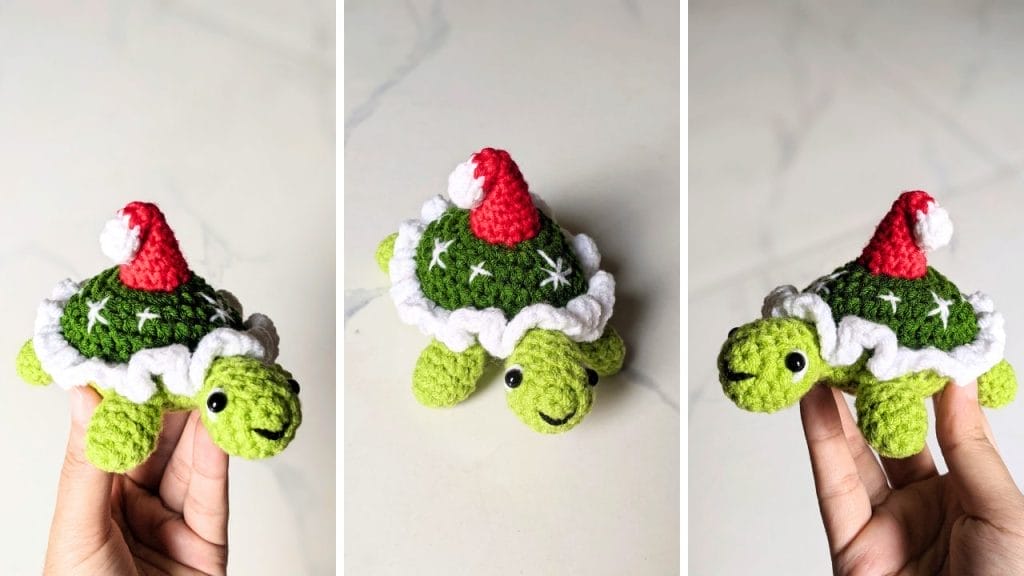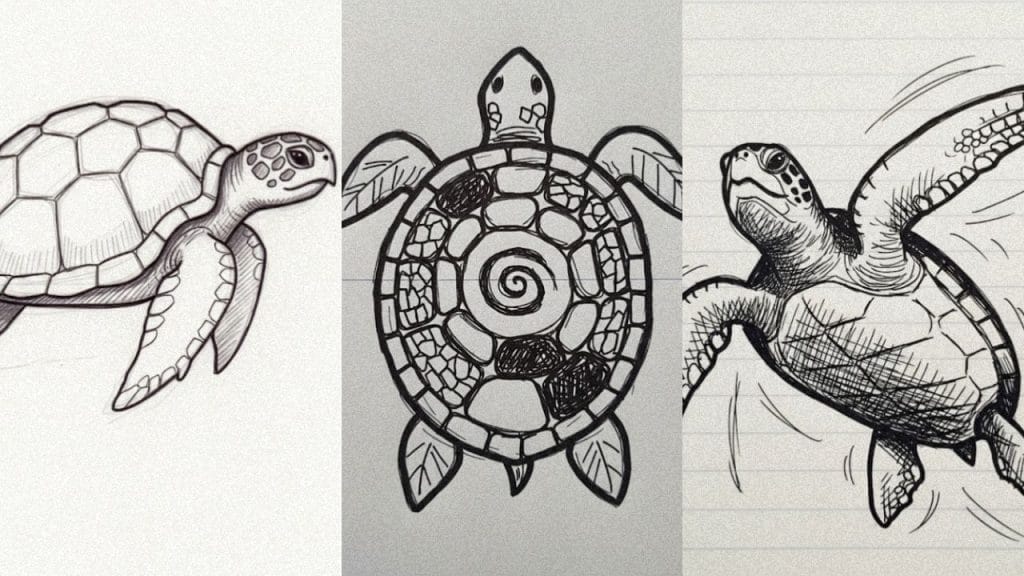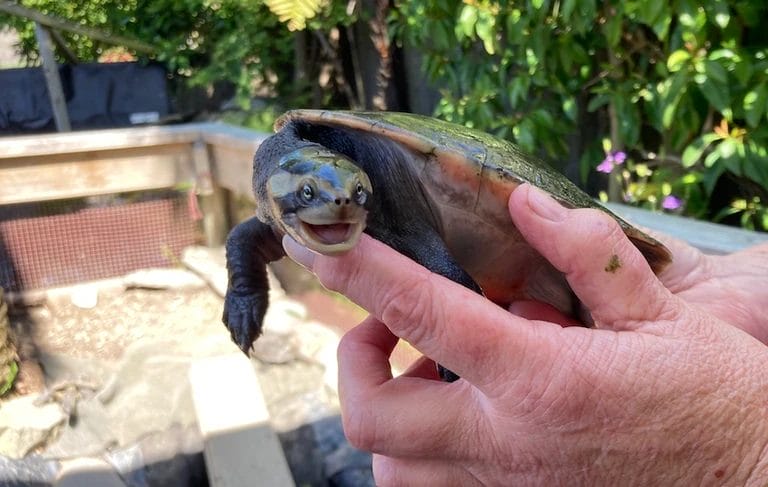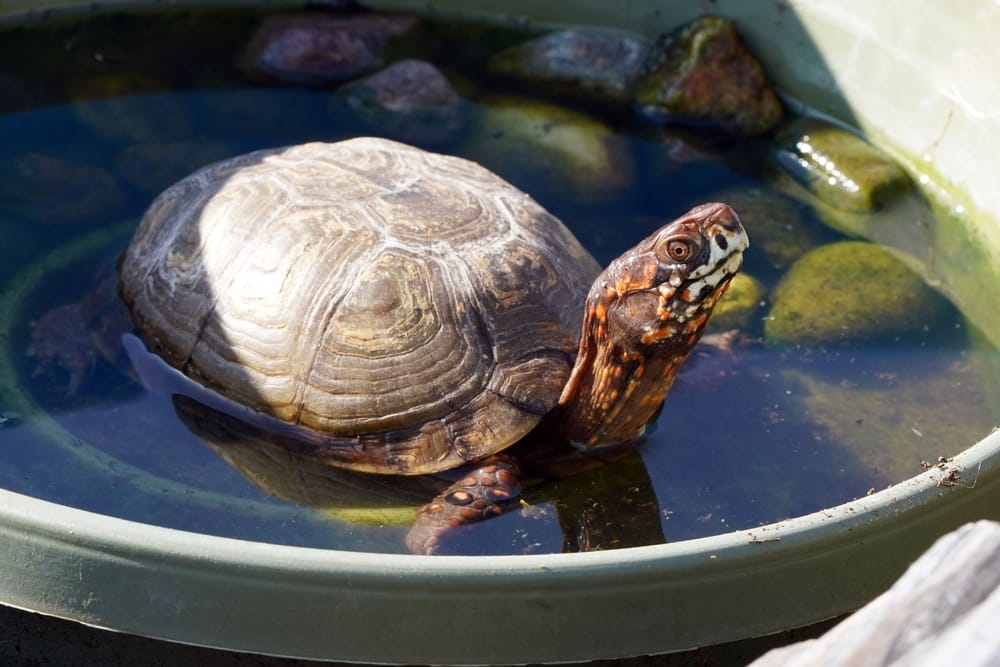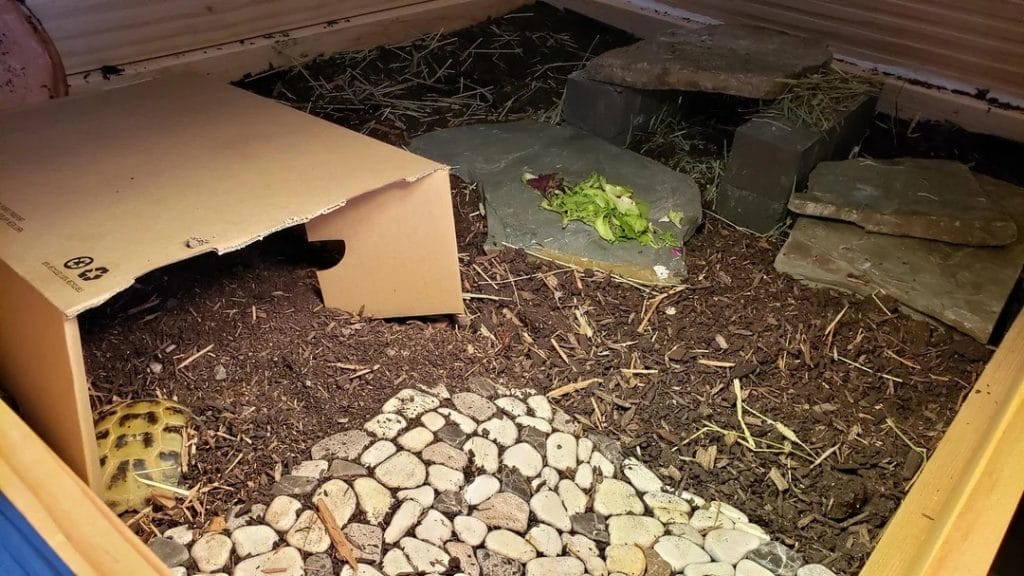Snapping Turtle Care Guide For Beginners: Everything You Need to Know

This post was created with help from AI tools and carefully reviewed by a human (Muntaseer Rahman). For more on how we use AI on this site, check out our Editorial Policy.
So you’re thinking about getting a snapping turtle.
Maybe you saw one crossing the road and thought it looked badass. Maybe you want a pet that won’t die on you in five years. Or maybe you just really, really hate having all ten fingers.
Whatever brought you here, let’s get one thing straight: snapping turtles are not cuddly pets. They’re not even friendly pets. They’re basically living dinosaurs with an attitude problem and jaws that could close a bear trap.
But if you’re ready for the commitment (and trust me, these turtles can outlive you), let’s talk about what it really takes to keep one alive and happy.
Meet Your New Roommate: The Snapping Turtle
There are two main types you’ll run into: the Common Snapping Turtle and the Alligator Snapping Turtle.
The Common Snapping Turtle is the one you’re more likely to see. They grow to about 8-18 inches in shell length and weigh 10-35 pounds, with some monsters hitting 75 pounds in the wild. Their shells are relatively smooth (well, smooth-ish), and they have this long, saw-toothed tail that makes them look like they crawled out of Jurassic Park.
The Alligator Snapping Turtle? That’s the big brother who went to prison and came back jacked. These guys can weigh 175 pounds on average, with some reaching 220 pounds. They have ridged, spiked shells that look like medieval armor, and they’re basically the largest freshwater turtles in the world.
Here’s the plot twist though: the Common Snapping Turtle actually has a stronger bite force (209 Newtons) than the Alligator Snapping Turtle (158 Newtons). Yeah, you read that right. The smaller one bites harder.

How Long Are You Signing Up For?
Remember when I said these things can outlive you? I wasn’t joking.
Common Snapping Turtles live 30-45 years in the wild, but in captivity with proper care, they can hit 47 years, with some research suggesting they can live over 100 years. One documented case in Ontario showed a Common Snapper living past 100 years old.
Alligator Snapping Turtles are believed to live 80-120 years, with some claiming they can reach 200 years. Thunder, an Alligator Snapping Turtle at the Newport Aquarium, reportedly lived to 150 years old.
So when you’re buying that baby snapper that fits in your palm, remember: that little guy might be attending your great-grandkids’ graduation.
This Hilarious Turtle Book Might Know Your Pet Better Than You Do
Let’s be real—most turtle care guides feel like reading a textbook written by a sleep-deprived zookeeper.
This one’s not that.
Told from the snarky point of view of a grumpy, judgmental turtle, 21 Turtle Truths You’ll Never Read in a Care Guide is packed with sarcasm, sass, and surprisingly useful insights.
And hey—you don’t have to commit to the whole thing just yet.
Grab 2 free truths from the ebook and get a taste of what your turtle really thinks about your setup, your food choices, and that weird plastic palm tree.
It’s funny, it’s honest, and if you’ve ever owned a turtle who glares at you like you’re the problem—you’ll feel seen.
Tank Setup: Not Your Average Goldfish Bowl
Let’s talk space, because this is where most people screw up.
Baby Snapping Turtles
A hatchling can start in a 10-gallon tank, but once they hit 8 inches, you need at least a 55-gallon setup. That’s not a suggestion. That’s a requirement.
Baby snappers need warmer water—around 78-80°F. The water depth should be at least as deep as the turtle’s shell is long, so they can fully submerge but still reach the surface to breathe.
Adult Snapping Turtles
Here’s where things get real. Adult Common Snapping Turtles need enclosures measuring 15-20 square feet minimum, while the largest Alligator Snapping Turtles require ponds with nearly 60 square feet of space.
A 120-gallon tank is the absolute minimum for an adult Common Snapper, but honestly? You’re better off with a stock tank, a large plastic tote, or an outdoor pond. Indoor aquariums are expensive and become impractical fast.
If you’re considering other turtle species that stay smaller and require less space, check out our guide on mud turtles, which max out at 5 inches and need significantly smaller enclosures.

Water Quality: It’s Going to Get Nasty
Snapping turtles are disgusting eaters. They tear food apart, spit out chunks, and poop like they’re trying to fertilize an entire garden.
Choose a filter rated for 2-3 times your tank’s capacity. If you have a 100-gallon tank, get a filter for 200-300 gallons. Even with a killer filter, you’ll need to change about one-third of the water every week.
Skip the chlorinated tap water straight from the faucet—use a water conditioner to remove chlorine first.
Temperature and Lighting
Keep ambient air temperature at 80-86°F, with a basking spot reaching about 90°F. Water temperature should be maintained with an aquarium heater.
Now, here’s something interesting: Common Snapping Turtles rarely bask—they’re more wanderers than sunbathers. But you still need to provide a basking spot just in case they decide to dry off.
Use a 5.0 ReptiSun UVB bulb for adults and a 10.0 ReptiSun bulb for babies. Keep lights on a 12-hour day/night cycle.
Decorations: Keep It Simple
These turtles are bulldozers with shells. Most veteran keepers advise against using decorations unless you’re prepared to lose them.
What you DO need:
- Underwater hides (broken flower pots, sturdy rocks, or commercial hides)
- Aquatic plants (duckweed, water lettuce, water hyacinth—though they might eat or uproot them)
- Large, stable rocks or driftwood
What you DON’T need:
- Gravel or small pebbles (choking hazard)
- Anything you’re emotionally attached to

Feeding: What Goes Into That Prehistoric Mouth?
Snapping turtles are omnivores, but they lean heavily carnivorous when young and add more plant matter as they age.
Baby and Juvenile Diet
Feed babies twice a day for 10-15 minutes. They need high-protein foods to grow:
- Small whole fish (pre-killed is easier, and they’re terrible hunters when young)
- Earthworms and blackworms
- Crickets (as treats, not staples)
- High-quality turtle pellets
- Freeze-dried shrimp
Avoid mealworms—they’re not worth feeding. And for the love of all that’s holy, avoid goldfish as they’re prone to parasites.
Adult Diet
Adults should be fed 2-3 times per week. Their diet expands to include:
- Fish (any species except goldfish)
- Strips of lean meat (chicken, beef—remove bones)
- Crayfish, shrimp, snails
- Pre-killed rodents (adult rodents are preferred for better calcium)
- Dark leafy greens (romaine, kale, collard greens)
- Commercial turtle pellets
All food should be sprinkled with a multivitamin once a week and calcium supplement daily for babies, three times a week for adults.
Critical rule: Snapping turtles must be fed in water to facilitate swallowing—their tongues aren’t designed to push food back.
For more details on selecting and preparing appropriate greens for aquatic turtles, our red-eared slider diet guide provides comprehensive vegetable options that work equally well for adult snappers.
How Much to Feed
Feed only what they’ll consume in 10-15 minutes. Overfeeding causes obesity, which affects kidneys and liver and leads to premature death. If your turtle looks like it’s trying to smuggle pizza slices under its shell, you’re feeding too much.

Handling: Or Why You Should Probably Not
Let me be blunt: In the water, snapping turtles are incredibly docile and will go out of their way to avoid you. On land? They turn into angry, hissing balls of prehistoric rage.
Common Snappers can bite you even if you’re holding the edges of their shell because of their long, flexible necks. They can reach about half to two-thirds of the way back along their shell.
If You MUST Pick One Up
NEVER pick up a snapping turtle by its tail. This can seriously injure its spine.
The safer method:
- Approach from behind
- Place one hand on the back portion of the shell near the hind legs
- Use your other hand to grasp the front of the shell, keeping your knuckles facing down to protect against the head
- Hold the turtle away from your body
- Keep its head pointed at the ground
For large turtles, just don’t. Call animal control or use a shovel/broom to encourage it to move.
If you get bitten, don’t panic and pull away—this makes the turtle bite harder. Wait for it to release, or submerge it in water.
Common Snapper vs Alligator Snapper: Care Differences
The care is similar, but the Alligator Snapper is basically the Common Snapper’s care on steroids.
| Feature | Common Snapping Turtle | Alligator Snapping Turtle |
|---|---|---|
| Adult Size | 8-18 inches, 10-35 lbs | 20+ inches, 175-220 lbs |
| Tank Size | 120+ gallons or 15-20 sq ft | 60+ square feet |
| Diet | Omnivorous (more plants as adults) | Strictly carnivorous |
| Appearance | Smooth shell, forward-facing eyes | Ridged, spiked shell, side-facing eyes |
| Temperament | Aggressive on land, docile in water | Extremely aggressive, ambush predator |
| Handling Difficulty | Difficult | Nearly impossible safely |
Alligator Snapping Turtles have a unique worm-like tongue lure they use to attract prey, and they’re sit-and-wait predators. Common Snappers are more active foragers.
Common Mistakes That’ll Kill Your Turtle
1. Tank Too Small
Cramped conditions lead to fighting, obesity, and premature death. If your turtle can’t swim properly, your tank is too small.
2. Wrong Temperature
One expert case showed a baby snapper refusing to eat because the water was 70°F instead of 75-80°F. Temperature is critical.
3. Poor Diet
Improper diet causes shell deformities like “curling”. Variety is key—don’t just dump pellets and call it a day.
4. Overfeeding
Obesity is extremely common in captive snappers. Feed appropriate portions, not whatever fits in the tank.
5. Trying to Keep Them Like Other Turtles
Snapping turtles aren’t Red-Eared Sliders. They need deeper water, bigger spaces, and they won’t tolerate tank mates.

Health Issues to Watch For
Common problems include:
- Respiratory infections (from poor water quality or wrong temperature)
- Metabolic bone disease (from lack of UVB or calcium)
- Shell rot (from dirty water)
- Parasites (especially if feeding live goldfish)
- Injuries from fighting (if you foolishly tried keeping multiple snappers together)
If your turtle stops eating, swims lopsided, has discharge from nose/eyes, or has soft/discolored shell, get to a reptile vet immediately.
Is a Snapping Turtle Right for You?
Let’s be real about this.
You should NOT get a snapping turtle if:
- You want a pet you can handle and interact with
- You don’t have space for a massive enclosure
- You’re not ready for a 40-100+ year commitment
- You can’t afford proper filtration and setup costs
- You have kids who might stick their fingers near the tank
You MIGHT be okay with a snapping turtle if:
- You want an impressive display animal
- You have the space and money for proper housing
- You’re fine with a hands-off pet
- You understand the long-term commitment
- You think prehistoric death machines are cool
The Bottom Line
Snapping turtles have moderately difficult care due to their diet variety, large size, aquatic nature, and aggression. They’re not beginner pets.
But if you do your research, provide proper care, and respect their space, they can thrive and live 30-40+ years in captivity.
These turtles have survived since before the dinosaurs. They’ve outlasted countless species, adapted to ice ages, and earned their place as one of nature’s most successful designs.
The question is: are you ready to give one the life it deserves?
If the answer is yes, welcome to the club. If it’s no, that’s okay too—there are plenty of other reptiles that won’t try to remove your fingers.
Either way, now you know what you’re getting into. And that’s way more than most people who impulse-buy a baby snapper can say.

About Author
Muntaseer Rahman started keeping pet turtles back in 2013. He also owns the largest Turtle & Tortoise Facebook community in Bangladesh. These days he is mostly active on Facebook.


